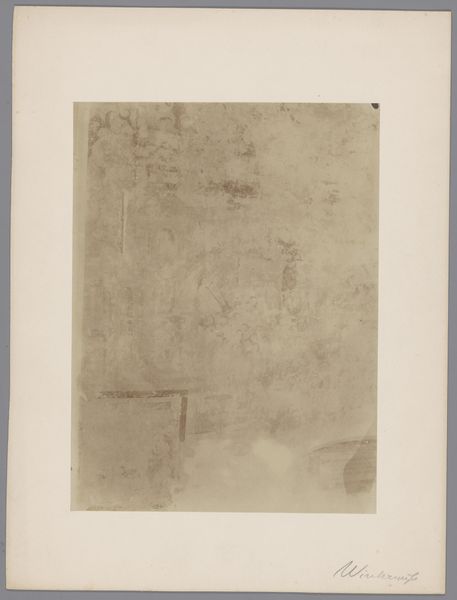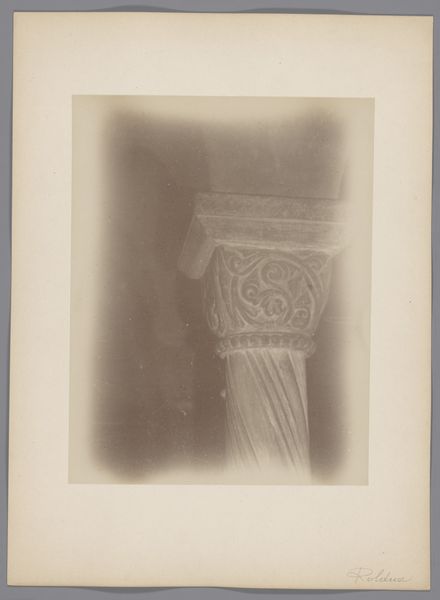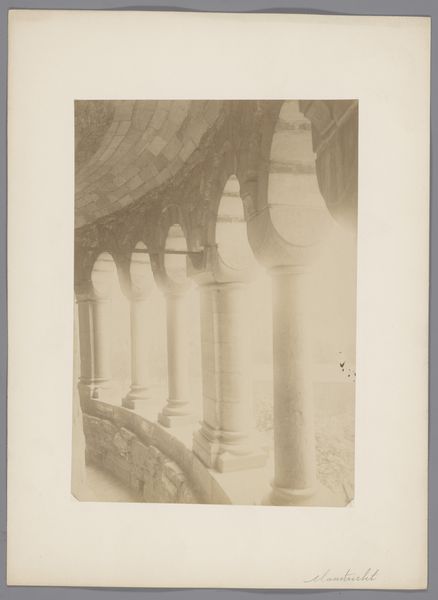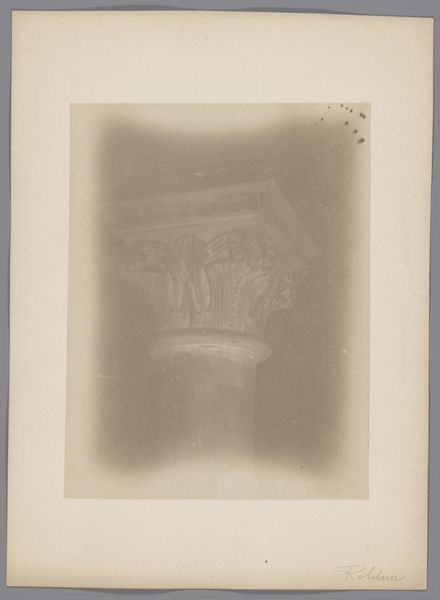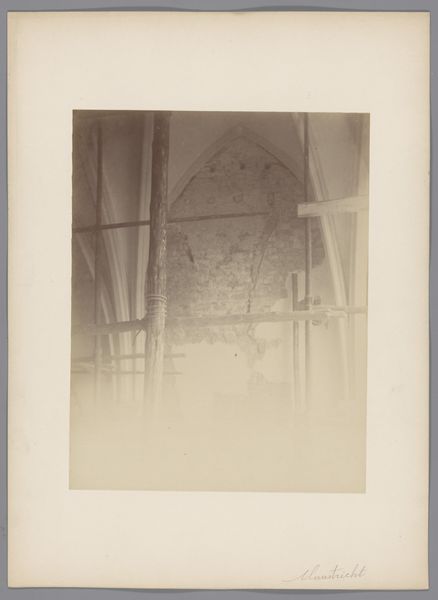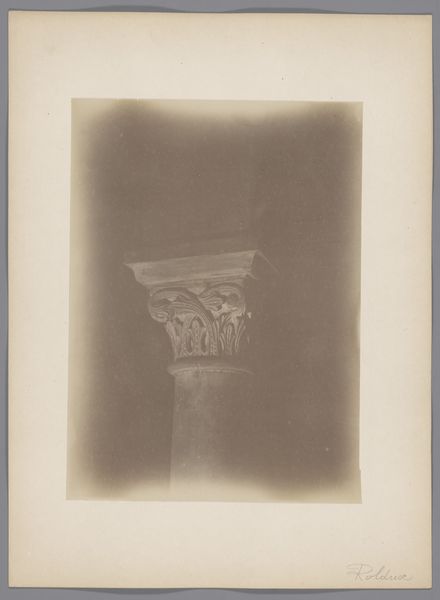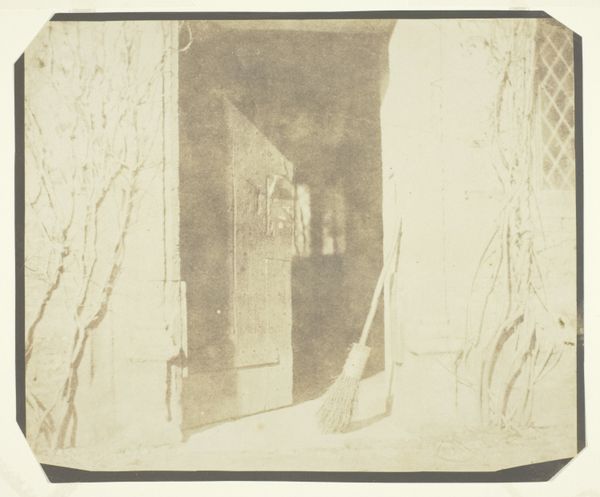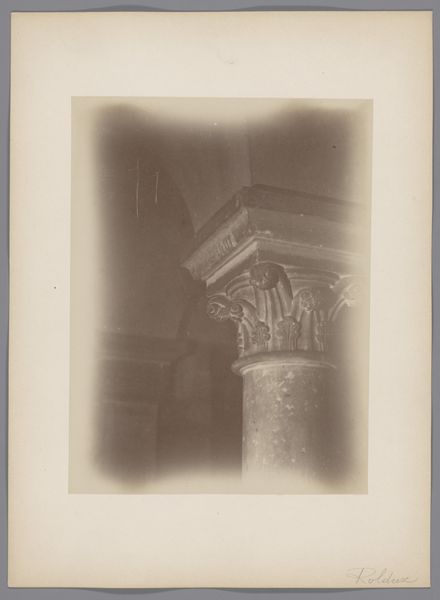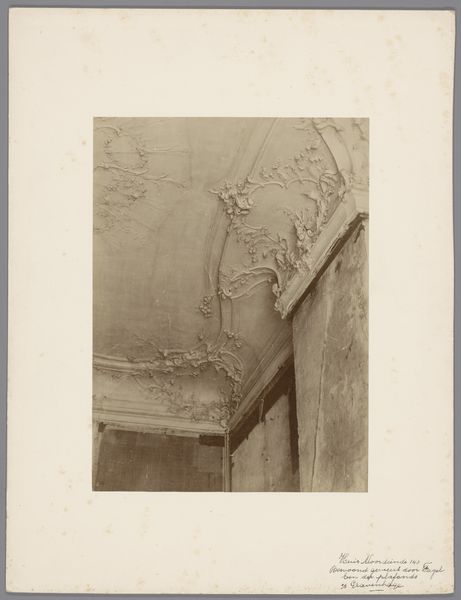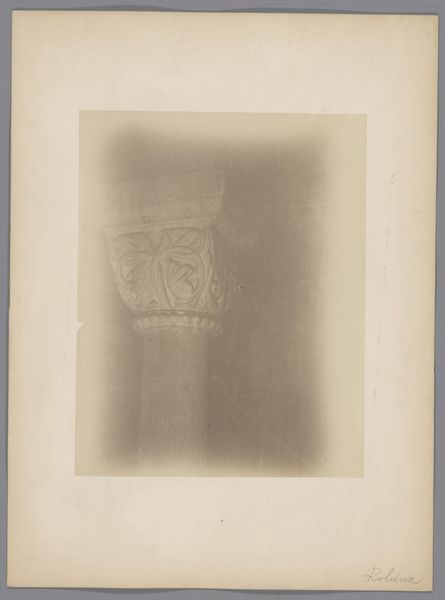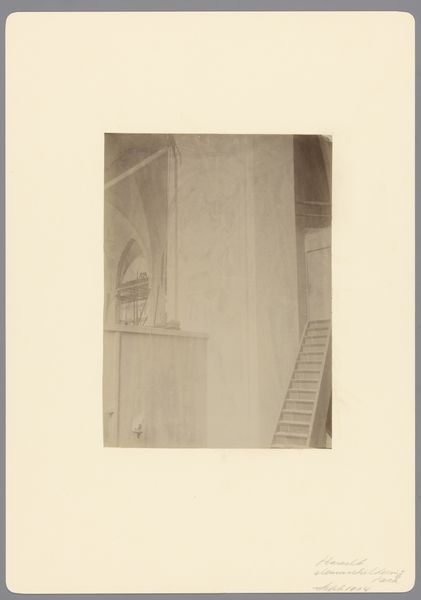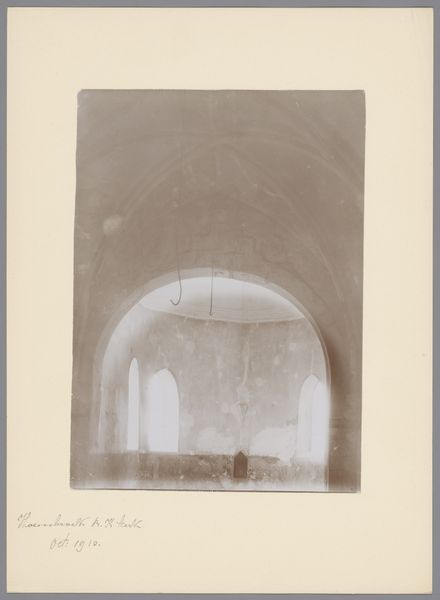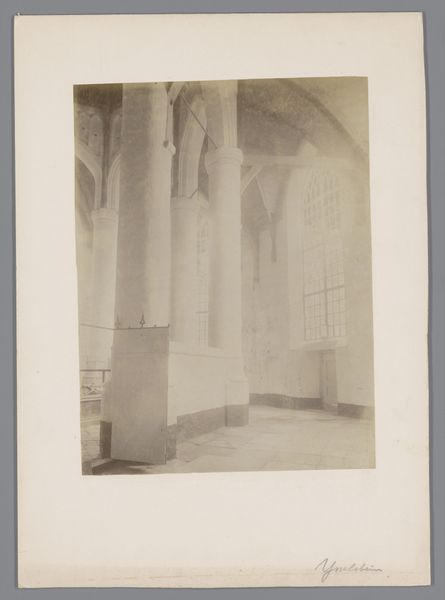
Dimensions: height 227 mm, width 172 mm
Copyright: Rijks Museum: Open Domain
Curator: We are looking at a photograph from 1890. It’s titled ‘Kapiteel van een wandpijler in de Abdijkerk Rolduc’, which translates to 'Capital of a wall pillar in the Rolduc Abbey Church'. Editor: My first impression is the quiet dignity, but also this imposing effect created by the height of the structure. The monochrome palette is also impactful. It has a hushed quality. Curator: Yes, notice the composition, the photographer is using strong verticals and horizontals. The light emphasizes the texture of the stone, drawing our attention to its materiality. The pillar is clearly load-bearing; however, it is meant for symbolic grandeur rather than purely functional support. Editor: Thinking about Rolduc Abbey and its historical significance, the capital feels symbolic. I wonder what the role of the church was during this period. The architecture feels so enduring; in what ways did its presence and influence shape the social, economic and spiritual lives of the local populations? Curator: That is interesting because one might observe, through structuralism, the capital is a symbolic language in itself, a signifier that points to the order and values of its time. The architectural language evokes this very stoic idea through simple circular patterns in the molding. Editor: Yet, the visual impression conveys how even the grandest of architecture must be understood by interrogating social and ideological purposes to reinforce or contest ideas of class, identity, or perhaps exclusion. Churches were, historically, very complex intersections. Curator: And if we approach from a perspective of materiality, the erosion, that imperfect fading that you mentioned before. How the elements gradually transform even the hardest stone. This fading also represents the passage of time. Editor: Seeing this in context reminds us to see historical artifacts not as isolated aesthetic experiences, but to view architectural constructs as embodiments of social dynamics and as reminders of their potential for both harmony and conflict. Curator: I agree. There’s a constant tension between what we see materially and the intangible forces that gave shape to these buildings and communities around them. Editor: Indeed. Approaching historical sites from different angles can provide more holistic and grounded insight.
Comments
No comments
Be the first to comment and join the conversation on the ultimate creative platform.
